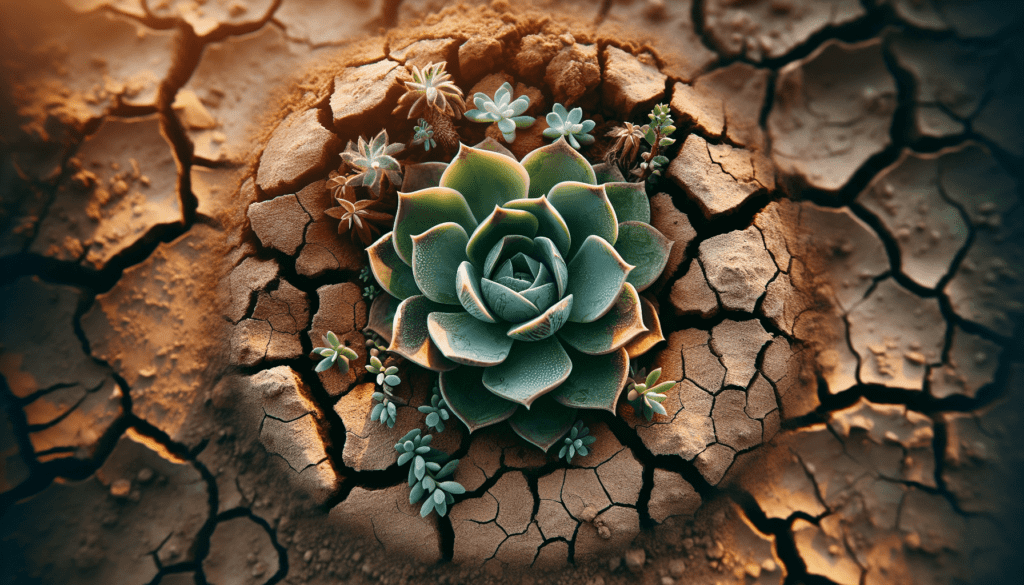Have you ever wondered how to create a beautiful garden that can survive even the harshest drought conditions?

Understanding Drought Conditions
Droughts are becoming more common due to climate change, and designing a garden that can thrive in these conditions requires some careful planning. But don’t worry, it’s not as daunting as it may seem!
What Are Drought Conditions?
Drought conditions occur when there is a prolonged period of below-average rainfall, leading to a shortage of water in the soil. This lack of water can put stress on plants, causing them to wilt, turn brown, and eventually die if not properly cared for.
Choosing Drought-Resistant Plants
When designing a garden for drought conditions, the most important factor to consider is the plants you choose to include. Opting for drought-resistant plants can make a world of difference in the success of your garden.
What Are Drought-Resistant Plants?
Drought-resistant plants are species that have adapted to survive with minimal water. These plants often have deep root systems that can access water deep within the soil, or they have leaves that are adapted to conserve water by reducing transpiration.
Examples of Drought-Resistant Plants
- Succulents, such as cacti and agave
- Lavender
- Russian Sage
- California Poppy
- Blanket Flower
Proper Soil Preparation
The soil in your garden plays a crucial role in the success of your plants, especially in drought conditions. Properly preparing the soil can help retain moisture and provide essential nutrients for your plants.
Improving Soil Structure
To improve the soil structure for drought conditions, consider adding organic matter such as compost or well-rotted manure. This will help retain moisture and promote healthy root growth.
Mulching
Mulching is another essential step in soil preparation for drought conditions. Mulch helps retain soil moisture, suppresses weed growth, and regulates soil temperature. Opt for organic mulches such as bark chips, straw, or leaves.
Efficient Watering Techniques
Watering your garden efficiently is key to maintaining healthy plants in drought conditions. Knowing when and how to water can make a significant difference in water conservation and plant health.
Watering Early or Late in the Day
To reduce water loss from evaporation, water your garden early in the morning or late in the evening when temperatures are cooler. This will allow the water to penetrate the soil and be absorbed by the plants more effectively.
Drip Irrigation Systems
Consider installing a drip irrigation system in your garden for more efficient watering. Drip irrigation delivers water directly to the roots of plants, reducing water waste and promoting healthier root systems.
Grouping Plants by Water Needs
Grouping plants with similar water needs together in your garden can help conserve water and make watering more efficient. By creating zones based on water requirements, you can tailor your watering schedule to meet the needs of each group.
High-Water-Use Plants
Plants that require more water, such as vegetables or annual flowers, should be grouped together in areas where they can be easily watered without affecting the drought-resistant plants.
Low-Water-Use Plants
Drought-resistant plants can be grouped together in areas where they can benefit from minimal watering. These plants can thrive with less frequent watering, making them ideal for garden areas with limited access to water.
Rainwater Harvesting
Collecting and storing rainwater is an eco-friendly way to supplement watering your garden during drought conditions. Rainwater is free of chemicals and has the perfect pH balance for plant growth, making it an excellent resource for your garden.
Rain Barrel Systems
Setting up rain barrels to collect rainwater from your gutters is a simple and effective way to harvest rainwater. The collected water can then be used to water your garden during dry periods, reducing your reliance on municipal water sources.
Creating Shade and Windbreaks
Providing shade and windbreaks in your garden can help reduce water loss from plants and soil, as well as protect your garden from harsh weather conditions.
Using Shade Cloth
Installing shade cloth over delicate plants can help reduce the intensity of the sun’s rays, preventing them from drying out too quickly. Shade cloth can also protect plants from extreme heat, allowing them to thrive in drought conditions.
Planting Windbreaks
Planting windbreaks, such as shrubs or trees, around the perimeter of your garden can help reduce the impact of strong winds on your plants. Windbreaks create a barrier that blocks wind gusts, preventing plants from losing moisture through transpiration.
Regular Maintenance and Monitoring
Regularly maintaining and monitoring your garden is essential for its survival in drought conditions. Keeping an eye on the health of your plants and the moisture levels in the soil can help you catch any problems early on.
Checking Soil Moisture
Regularly check the soil moisture levels in your garden by sticking your finger into the soil. If the top inch of soil feels dry, it’s time to water. Avoid overwatering, as this can lead to root rot and other issues.
Pruning and Deadheading
Pruning dead or damaged branches and deadheading spent flowers can help promote new growth and conserve plant energy in drought conditions. Removing any diseased or infested plant parts can also prevent the spread of pests and diseases.
Conclusion
Designing a garden for drought conditions may seem challenging, but with proper planning and care, you can create a beautiful and thriving garden that can withstand even the harshest of conditions. By choosing drought-resistant plants, preparing the soil, using efficient watering techniques, and implementing sustainable practices, you can enjoy a vibrant and sustainable garden for years to come. Happy gardening!

